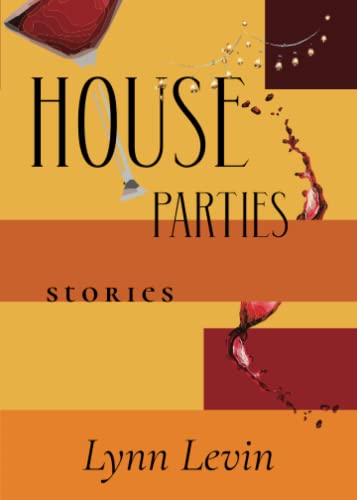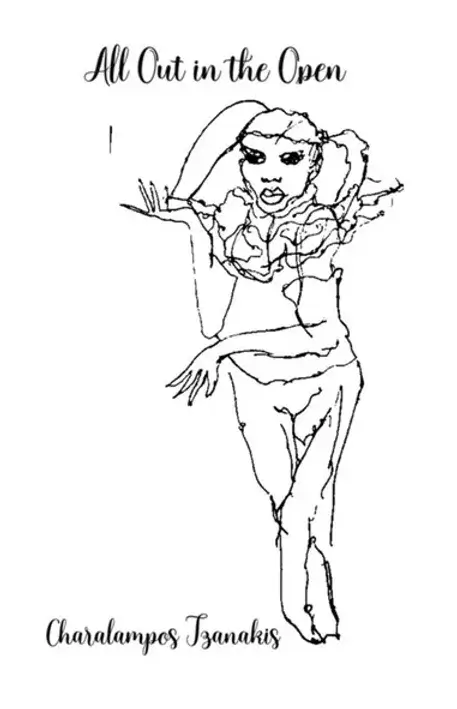
Review
Intricate Spaces: A Review of House Parties
By Lynn Levin
Spuyten Duyvil
ISBN: 978-1959556039
Review by Valerie Fox
Lynn Levin, accomplished and prolific poet and translator of poetry, has brought her refined aesthetic to House Parties, her debut short fiction collection. As in her poems, she develops characters through distinctive voices and reveals insights by vivid imagery. It is this style that brings together these twenty stories into a pleasing set, but there are recurrent themes that do this, as well.
Several give us family sagas, portraying that love, loss, companionship, and sadness. She also offers deft portraits of time and place, as her characters negotiate recent times, but recall coming of age across the decades.
For instance, in “The Husband and the Gypsy,” Levin brings to life members of a Russian immigrant community making their way in northeast Philadelphia in the late 1970s.
In “A Visit to the Old House,” two sisters encounter the midwestern house where they grew up: “With its arched Tudor door and windows eyebrowed with rays of white tone trim, the front of the house looked like a face mildly surprised to see us.” The house, as a character, encapsulates the complicated feelings and histories of the sisters, who are back in their hometown to visit their ill father, who had physically abused them as children. The focus on and description of the house’s materials and architectural features feels like a nod to our design-mad culture. And the sisters, faced with their father’s decline, find nostalgic echoes, if not comfort, in their old home.
Levin’s portrayals of relationships between sisters and women have come up, as well, in her books of poetry. Her Lilith poems, which appear in Miss Plastique (Ragged Sky Press, 2013), are a set of narrative poems placing Lilith in modern settings. In them, friends Eve and Lilith try on clothes in Macy’s, commiserate about Adam, and so on. If you admire these poems, you’ll be delighted to find related themes developed in House Parties.
“The French Milliner’s Model” is a family exploration, with a nod to the horror genre in the form of a scary, antique milliner’s manikin head that haunts the main character, Babette. Middle-aged Babette is remembering her recently lost Grandma Caroline, and dealing with her legacy gift helps her to appreciate the gifts of her own life.
Throughout the collection, there are many references to letter-writing and kinds of writing. These highlight how the written word (whether by letter, text, senior thesis, etc.) is integral to people’s working out of their feelings. They are clever plot devices that reveal much about the characters. When Warren, the 14-year-old narrator of “The Husband and the Gypsy,” reads his mother’s private journal, it sets into motion the boy’s scheme to bring his parents closer. In “Evermay Blair,” the main character, Kenneth, writes a letter of confession, tinged with his psychological imbalance, that he burns rather than send. The resolution of this story is complex. It may have you thinking…would I do that, could I do that?
In “Sendings,” a lonely woman’s envy of her neighbor’s seemingly perfect life and desire for connection and friendship cause her to stalk this neighbor through the mail under the guise of doing a sociological experiment. This piece opens:
After dark, cloaked by the red-and-yellow plaid curtains of her bedroom, Betsy Baines peered through her binoculars into the Eastman’s house. The amber-lit rooms glowed like dioramas of the ideal life. From the big living room picture window—rarely did the Eastman’s draw their blinds and draperies—Betsy watched the family talking, reading, and watching TV.
This beginning hints at the timely concerns that are the subtext for this piece (lack of privacy, an epidemic of loneliness, distrust of others).
Levin’s satire and humor are on display throughout the collection, contrasting sharp humor with serious and dark themes, and they get dark. Surely, some of the difficulties her characters face are “first world problems,” but Levin also reveals how these struggles are painful enough, and in several stories, it is revealed how violence, ill-will, or just plain bad luck lead to ill-advised behaviors and even crimes. Most of her characters are sympathetic, and many survive to find their voice. Levin’s characters live in intricate, believable spaces. She draws us into these worlds, and to be in them and to return to them is a thoughtful and rewarding experience.
About the Author
Valerie Fox has won The Phare’s WriteWords competition (for flash) and her stories have appeared in the Best Microfiction and Best Small Fictions anthologies. She has published numerous books of poetry, including The Rorschach Factory (Straw Gate Books) and Insomniatic (PS Books). She has published writing in Juked, Across the Margins, Painted Bride Quarterly, Reflex, West Branch, Literary Orphans, Cleaver, and others. She is the managing editor at New Flash Fiction Review. Her twitter is @valeriepftw and you can read more of her work at her wiki.



